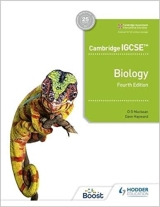Paramecium
Paramecium is a ciliate protozoan. Ciliates’ bodies are covered with fine cytoplasmic hair-like structures called cilia. Flickering movements of the cilia propel the organism through the water and also create feeding currents. Paramecium is a ciliate. In describing its structure, comparisons will be made with amoeba. It is suggested, therefore, that amoeba is studied first.
Unlike amoeba, paramecium has a distinct and permanent shape and certain areas of cytoplasm, (cell organelles), are specialised to carry out specific functions.
Locomotion. Individual cilia bend and straighten rapidly in such a way that the recovery stroke offers minimal resistance and the bending stroke helps propel paramecium through the water. The whole complement of cilia beat in a rhythmic pattern, (metachronal rhythm), so that the waves of contraction pass over the cell body like wind blowing through ripe corn.
If paramecium encounters an obstacle, it reverses the ciliary beat and moves back. It then changes direction slightly and moves forward. It will do this repeatedly until it gets past the obstruction. This reaction also shows that paramecium is sensitive to stimuli (in this case, the stimulus of touch).
Feeding. Paramecium and amoeba both live in fresh water pools or ponds and feed on microscopic organisms such as bacteria and single-celled algae. Amoeba is able to take in food at almost any point on its surface. Paramecium, on the other hand, can take in food only at the cytostome. The cilia in the oral groove create a current of water which wafts the food organisms up to the cytostome where they are ingested in a food vacuole. This food vacuole then follows a specific route through the cytoplasm. On its travels, enzymes are secreted into the vacuole and the food is digested. The digested substances are then absorbed into the cytoplasm.
Any undigested matter is expelled through the anal pore. This contrasts with amoeba which can expel the undigested remains from almost any point.
Reproduction. Paramecium reproduces, like amoeba, by binary fission. The ciliate stops moving and both mega- and micronucleus divide and move to opposite ends of the organism. The cytoplasm then divides at right angles to the long axis and the daughter paramecia separate. Binary fission may take place 2 or 3 times each day.
There is also a complex sexual process in which two paramecia join by their oral surfaces. The meganucleus breaks down and the micronucleus divides. One of the micronuclei of each individual crosses to the partner and fuses with the remaining micronucleus there. The partners then separate and reproduce by binary fission.
Osmoregulation. Paramecium and amoeba live in fresh water. Their cytoplasm contains a greater concentration of solutes than their surroundings and so they absorb water by osmosis. The excess water is collected into a contractile vacuole which swells and finally expels water through an opening in the cell membrane.
In amoeba, the vacuole forms near the posterior end but is not associated with a particular structure. Although it empties its contents through an opening in the cell membrane, this also does not appear to be a permanent pore.
Paramecium has two contractile vacuoles, one at each end, which fill and contract alternately. They are permanent structures and the surplus water is conducted to the vacuoles by a series of radiating channels.
Other ciliates. There are many other species of ciliate. Vorticella has a stalk which attaches it to pondweed or pond debris and which can retract if the protozoan is disturbed. The cilia do not cover the body but are restricted to a double row on the upper margin. The cilia create a feeding current which
wafts food particles into the oral groove.
For illustrations to accompany this article see Protista
See also: Videos of Paramecium
| Search this site |
| Search the web |
© Copyright D G Mackean & Ian Mackean. All rights reserved.

